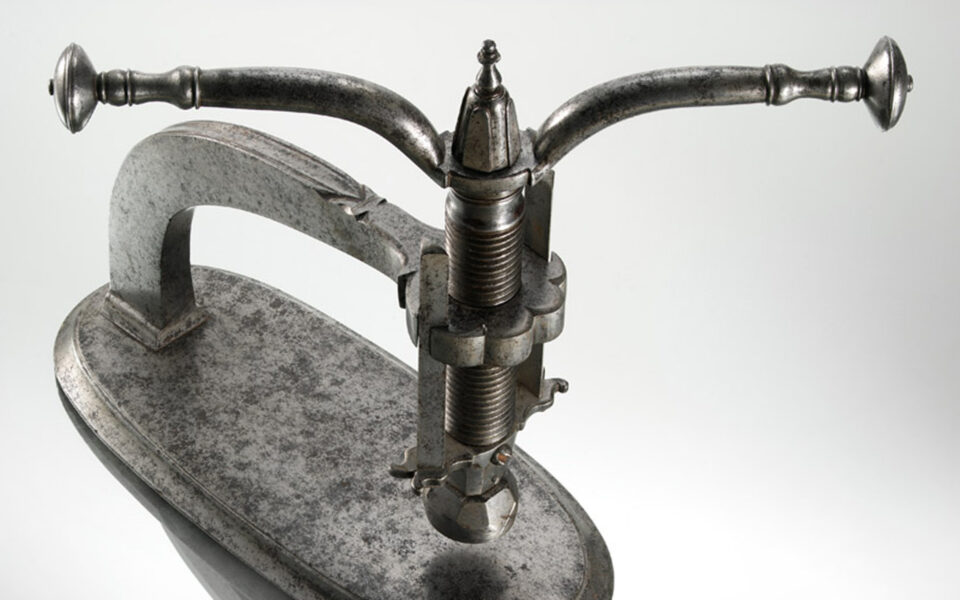
A very sophisticated Sealing Press
Very high quality of ironworking is the distinctive feature of this elegant sealing press.
Over an oval plate with moulded rim is fixed a frame consisting of a curved arm, ending with a polylobed element with vertical passing screw crowned in the upper part with a moulded cap, and two small quadrangular driving bars. The screw is operated by a crank consisting of a moulded bar with quadrangular central hole and baluster knob finials. The seal matrix is moulded and engraved with a fine monogram. The proper seal, could be impressed on the hot sealing wax or directly on the paper, i.e. ‘dry stamp’.
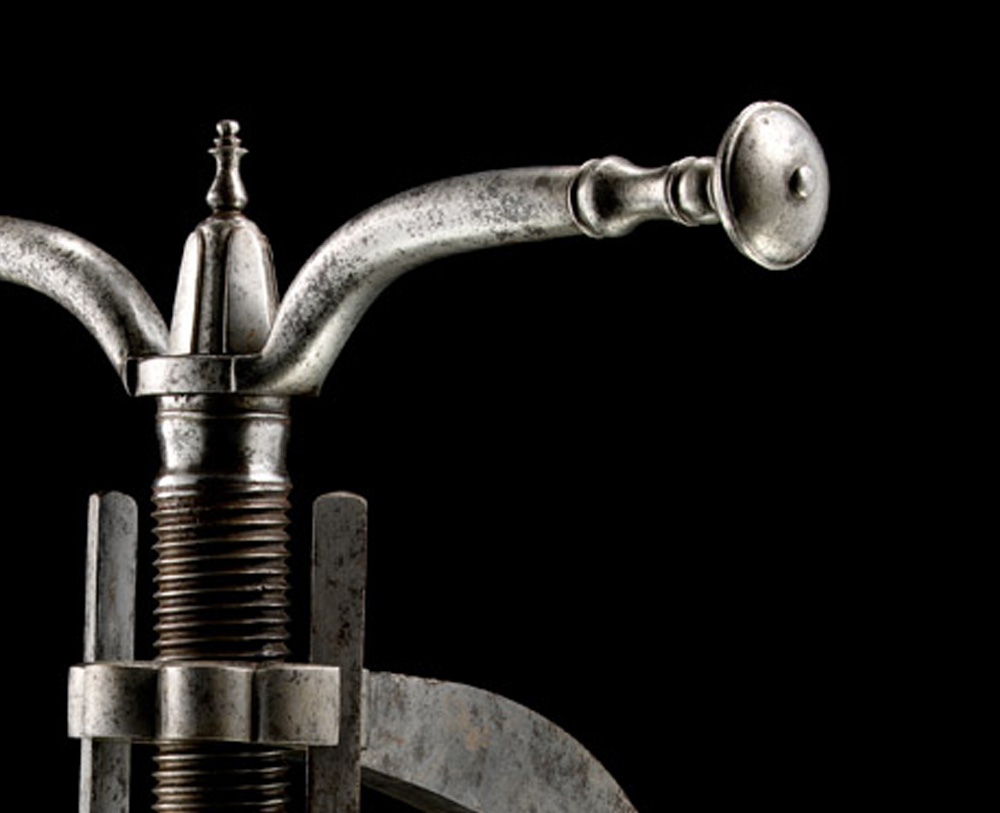
The history of seal is so fascinating that it sparked a remarkable and widespread interest over the centuries, and still today it motivates some of the most refined collectors. Since ancient times the seal has been used, as a sign of power, to legitimate documents, letters or envelopes, or to seal them and thus prevent tampering; in Italy this practice acquired particular importance as early as the Middle Ages, but it was from the Renaissance onwards that the use of seals on paper became a common procedure. The charm of the seal derives from the fact that it encloses, in a few centimeters, many centuries of history, legal evolution and social transformation.
The first sealing presses, which flanked the ancient manual pressure seals, were created in the mid-sixteenth century and became more widespread between seventeenth and nineteenth centuries, being used in the great royal, noble or ecclesiastical chancelleries, to manage and certify a significant, and often growing, amount of documents.
Presses like this one, with its elegant and slender design, could be used by high aristocratic officials to seal official documents and dispatches quickly, conveniently, but also quietly and elegantly, as well as with greater precision and regularity than using a manual seal: these refined instruments were typical of an enlightened age that marked the decisive rationalisation of the archives and the development of notarial procedures as we know them today.
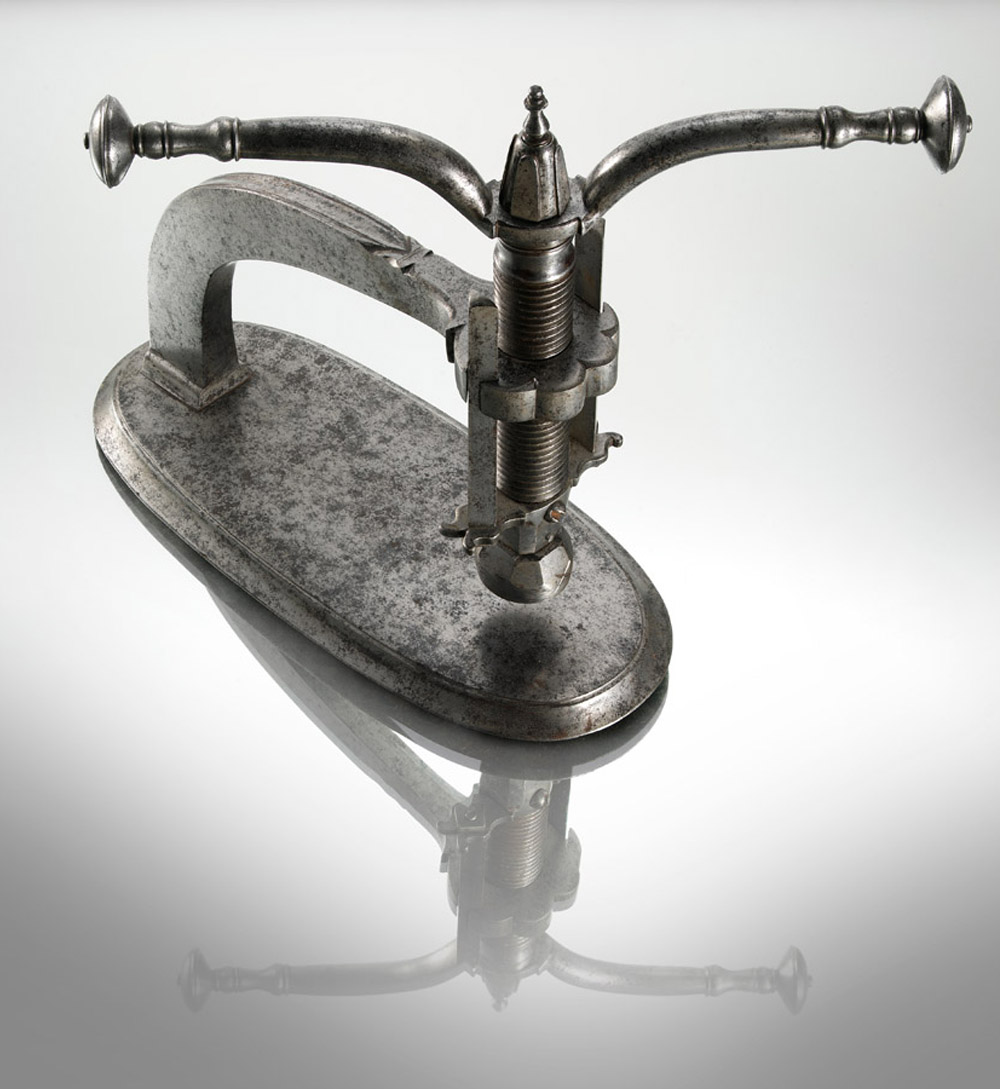
The press illustrated here is outstanding for its noteworthy elegance, achieved thanks to the high quality of the iron used, and through a sophisticated work of turning and shaping that can be appreciated in the details, such as the very particular shape of the driving bars, the perforated and polylobed ring, the very fine pitch screw and the elegant finials on the handle: all technical, as well as aesthetic, details that ensure a regular descent of the die, guaranteeing the perfect legibility of the seal applied.
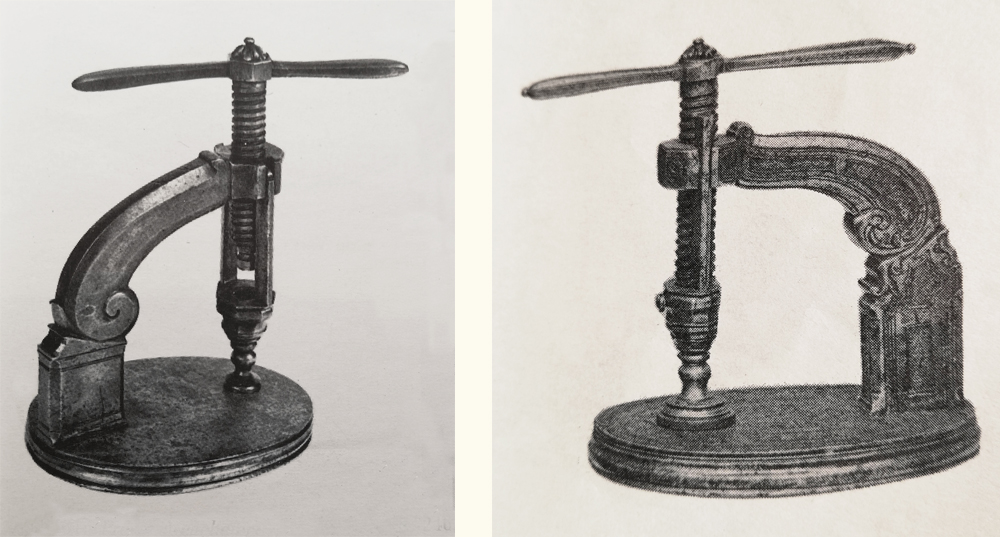
Among the rare known examples, formally and aesthetically comparable to this elegant press, there are two very similar instruments in the Le Secq des Tournelles Museum in Rouen and another one formerly in the Nessi collection.
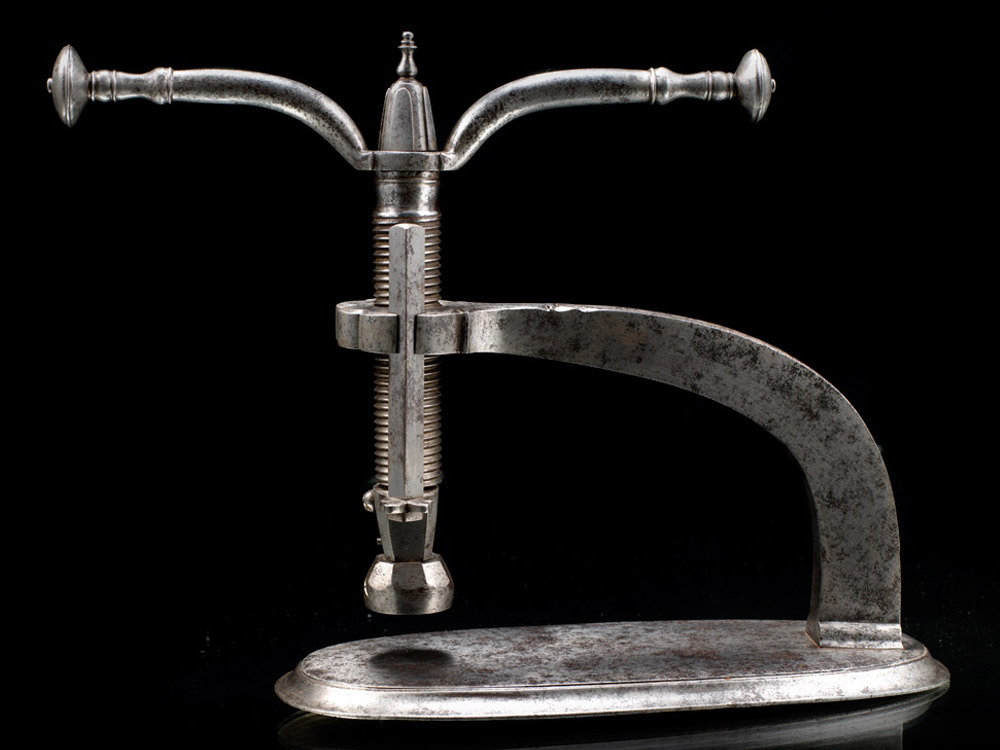
SEALING PRESS
Wrought, carved and engraved steel
Cm 19 x 21 x 16
Italy
Second half 18th century
Bibliography: A. and F. Cesati, Tools, Milano 2013, cat. 26, p. 79, 99;
References: H.-R. D’Allemagne, Decorative Antique Ironwork, New York 1960 (ed.or 1924), p. 309, fig. G., p. 309, ill. G.; V. Fagone, Il momento artigiano, Milano 1976, p. 98; Objets civils domestiques. Vocabulaire, Paris, Imprimerie Nationale 1984, p. 525; Il sigillo nella storia, exh. catalogue (Venice, Museo Correr, 1985); VV.AA., Antichi strumenti e utensili della collezione Nessi, Milano 2004, p. 343, pl. 160.
© 2013 – 2023 cesatiecesati.com | Please do not reproduce without our expressed written consent
Alessandro Cesati, Via San Giovanni sul Muro, 3 – 20121 Milano – P.IVA: IT06833070151